






























1250 Bellflower Blvd., LA4-203 Long Beach, CA, 90804
Phone (562) 985-8000
Sam Farfán El Nicklin
Acsah Lemma
Editorial Office Director of Business Operations Managing Editor Editor in Chief Community Engagement Editor
Linsey Towles
Multimedia Managing Editor business@gobeach.media managing@lbcurrent.com eic@lbcurrent.com community@lbcurrent.com multimedia@lbcurrent.com
Kristina Agresta
Editors
Juan Calvillo News Editor news@lbcurrent.com
Julia Goldman Arts & Life Editor arts@lbcurrent.com
Joannah Clemente Opinions Editor opinions@lbcurrent.com
Davis Ramage Sports Editor sports@lbcurrent.com
Jaylyn Preslicka Solutions Editor solutions@lbcurrent.com
Luis Castilla Design Editor design@lbcurrent.com
Khoury Williams Copy Editor
Samuel Chacko Photo Editor
Jazmyn De Jesus Social Media Editor
Dante Estrada Video Editor
Aidan Swanepoel Podcast Editor
Graphic credit: LUIS CASTILLA /Long Beach Current
BY LINSEY TOWLES Managing Editor
Some aspects of Long Beach State have become iconic since its inception in 1949, like the Walter Pyramid’s towering presence, the James Burns Miller Japanese Garden’s zen and the backdrop of the Go Beach letters.
Another iconic staple of the university: its parking.
Why is parking at CSULB the way it is?
At the start of the academic year, new and returning students know the drill. Similar to his peers, transfer student and Associated Students Inc. Vice President-elect Shelton King Jr. had been warned about parking.
In 1950, the City of Long Beach authorized the City Council to buy a 320-acre tract of land that would become the college’s official home. Construction began in the summer of 1951 and temporary buildings were used to accommodate the incoming fall class.
The start of the fall semester brought the issue of parking to the forefront for the first time. On the sprawling 320 acres, the designated student parking lot was on the side of a dirt hill.
News Assistants Ethan Cohen
Annette Quijada
Christopher Canche Chan
Mayra Salazar
Nasai Rivas
Arts & Life Assistants Delfino Camacho
Grace Lawson Diego Renteria
Opinions Assistants Lizbeth Cortes-Gutierrez
Romi Mathews
Christine Nader
Sports Assistants Matthew Coleman
Alyssa De La Cruz
Matthew Gomez
Jack Haslett
Soleil Cardenas Design Assistants
Copy Assistants
Angela Osorio
Timothy Hessen
Bella Garcia
Photo Assistants Lauren Benson
Justin Enriquez
Devin Malast
Mark Siquig
Social Media Assistants Igor Colonno Selestino
Andrew Miller
Video Assistants Eduardo Contreras Jr.
Skylar Stock copy@lbcurrent.com photo@lbcurrent.com socials@lbcurrent.com video@lbcurrent.com podcast@lbcurrent.com
Gianna Echeverria Podcast Assistants
Alexandra Gryciuk
BusinEss
“My friend had warned me and told me all about parking. I didn’t think it would be that bad,” King Jr. said. “But it really was that bad. It’s a bit depressing that you pay all this money and can’t park anywhere.”
Sentiments like King Jr.’s are often echoed online each year by many, complaining of limited parking spaces, circling lots for hours and the distance of student lots from academic buildings.
While it’s become more prevalent over the years, parking is not a modern issue. Since its founding, parking at the university has been contentious, and the question of where and how to build more parking remains unclear.
Dirt lots and mudslides
The university was founded on Sept. 28, 1949, under the name Los Angeles-Orange County State College. On its first day of classes, 160 students met in a converted apartment building.
“What’s now lower-campus where the [University] Student Union is and Brotman Hall, most of that was unpaved and that’s where we parked,” Lee Brown, a class of 1960 alumnus, told the Long Beach Current, formerly Daily Forty-Niner in 2019. “When it rained, AAA made millions. They came and winched and pulled everybody out.”
Dirt lots and the hilly nature of the campus made for sliding and stuck cars in the rain, prompting the first paved parking lot to be built in 1959.
Nowhere to go but up
By the 1980s, most of the parking lots students recognize today were established, but the need for more lots grew and room to pave ran out. In 1994, the Palo Verde parking garage was completed and added 2,800 parking spots.
According to the university’s current master plan, there are no major plans to build new parking lots or garages. With residential neighborhoods, the Veterans Affairs Hospital and Puvungna surrounding the campus, options for expansion are slim. Instead, the university intends to make improvements to existing lots.
For now, parking continues to be an obstacle for the student body just as it was 75 years ago.
land acknowlEdgmEnt
Here at the Long Beach Current we acknowledge that the school we report on is located on the sacred site of Puvungna, “the gathering place”. We are on the land of the Tongva/ Gabrieleño and the Acjachemen/Juaneño Nations who have lived and continue to live here.
We also acknowledge the Gabrieleño/Tongva (pronounced: GABRIEL-EN-YO/TONG – VAH) and Acjachamen/Juaneño (pronounced: AH-HACH-AH-MEN/JUAN-EN-YO) as the traditional custodians of the Los Angeles region along with the Chumash (pronounced: CHOO-MOSH) to the north and west, and the Tataviam (pronounced: TAH-TAH-VEE-YUM) and Cahuilla (pronounced: KAH-WEE-YAH) Nations to the east.
Andrea Contreras Advertising Manager advertising@gobeach.media
Jennix Bien Creative Director
Leila Nuñez Web & Technology Director
PR & Marketing Manager
assistants advisErs
web@gobeach.media creative@gobeach.media
Nicollette Combre
Joseph Vargas Distribution Manager
Madison Yang distribution@gobeach.media beach.pr@gobeach.media
Gary Metzker Design Adviser
Barbara Kingsley-Wilson Content Adviser
Jennifer Newton Advertising & Business Adviser
We respect and value the many ways the Tongva/Acjachemen cultural heritage and beliefs continue to have significance to the living people and remind us about the sacred and spiritual relationship that has always existed here at what we now call California State University Long Beach.
Editorials: All opinions expressed in the columns, letters and cartoons in the issue are those of the writers or artists. The opinons of the Long Beach Current are expressed only in unsigned editorials and do not necessarily reflect the opinions of the journalism department or the views of all staff members. All such editorials are written by the editorial board of the Long Beach Current.

lEttEr Policy: All letters and emails must bear the phone number of the writer and must be no more than 300 words. The Long Beach Current reserves the right to edit letters for publication in regard to space.
This issue of the Long Beach Current explores many of the questions students have had on their minds and some they didn’t know they wanted answers to. Monday,
BY SKYLAR STOCK Video Assistant
Students are set to say farewell to the escalators on the west side of the University Student Union in August.
The infamous escalators at Long Beach State will be placed permanently out of commission in the beginning of the fall 2025 semester after 27 years of service.
Instead, the escalator will be replaced with stairs, at a gradual incline. There will also be two additional elevators constructed, leaving four total ele-
vators next to the USU to serve students.
“The escalators have become a sort of endearing part of the physical structure of the facility,” said Associated Students Inc. Communications Manager Shannon Couey. “I think the decision to move away from them…I think it’s going to make it much easier getting around from lower to upper campus.”
After approving the Future U project in 2023, the university will officially close all USU activity in August, as they start revamping the campus’s student hub.
According to Couey, this is the biggest project in the CSU system and will take up five acres of land.
“Initially, I personally advocated to keep the escalators, but with all things considered, students would benefit more from having a prettier set of stairs [and elevators], rather than expensive escalators,” Andre Achacon, ASI vice president of finance, said.
Years of discussions from stakeholders like the
Bob Murphy Access Center and students on campus revealed that reliability and equitable access would best serve the student population.
“When it’s raining, or when there’s any minor weather inconvenience, they’re down,” said second-year psychology major Velina Valenzuela.
Valenzuela frequently makes the trek from lower to upper campus to get to the psychology building.
The escalator is out of service more than 50% of the time and maintenance is expensive, according to CSULB Capital Project Development Manager Melissa Soto.
According to Achacon, the decision to retire the escalator ultimately came down to the escalator’s costly maintenance and accessibility issues. The Future U project is a chance to correct these problems.
Excluding the escalator from the finalized plans will save around $900,000 in renovation costs. The escalator also has an annual maintenance cost of $116,000 per year.
Couey said money usually spent to maintain the escalator is planned to be reinvested into student events and programming.
BMAC Director Mary Nguyen listened to students’ needs and said she realized the current system left many people isolated in their travel from lower to upper campus.
“If you had a mobility limitation, you would likely need to be utilizing the elevator in the USU - if the USU
is open,” Nguyen said. “If it is not open, you would be looking at traveling along the perimeter of the campus, kind of by the parking lot and the road. And that can be really exhausting.”
Cooper Jones, a third-year fine arts major, currently deals with this dilemma.
“Right now I have to go through the Student Union, which is kind of out of the way sometimes, especially if I’m in a hurry to get to class,” Jones said. “Long Beach has a big disabled student population with, like, BMAC and everything. I think that probably the benefits [for renovation] outweigh the cons.”
The new elevators will be separate from the USU, allowing students access to upper campus at all times. Students will no longer need to rely on the USU’s scheduled open times and “slow” elevators.
“Meeting the ADA requirements… is the minimum, right? And we want to break through that feeling and really go above and beyond,” Nguyen said.
There is a fee increase of $284 per semester to fund the Future U project, according to Couey. This flat fee was decided by the Student Fee Advisory Committee.
“I hear the frustration from students. I know that they’re upset, but this decision wasn’t taken lightly,” Couey said. “[The Student Fee Advisory Committee’s] interest was really keeping that project increase as low as possible.”
The Future U project is planned to be fully completed in August 2028. More information on the construction and project can be found on the Future U page on ASI’s website.
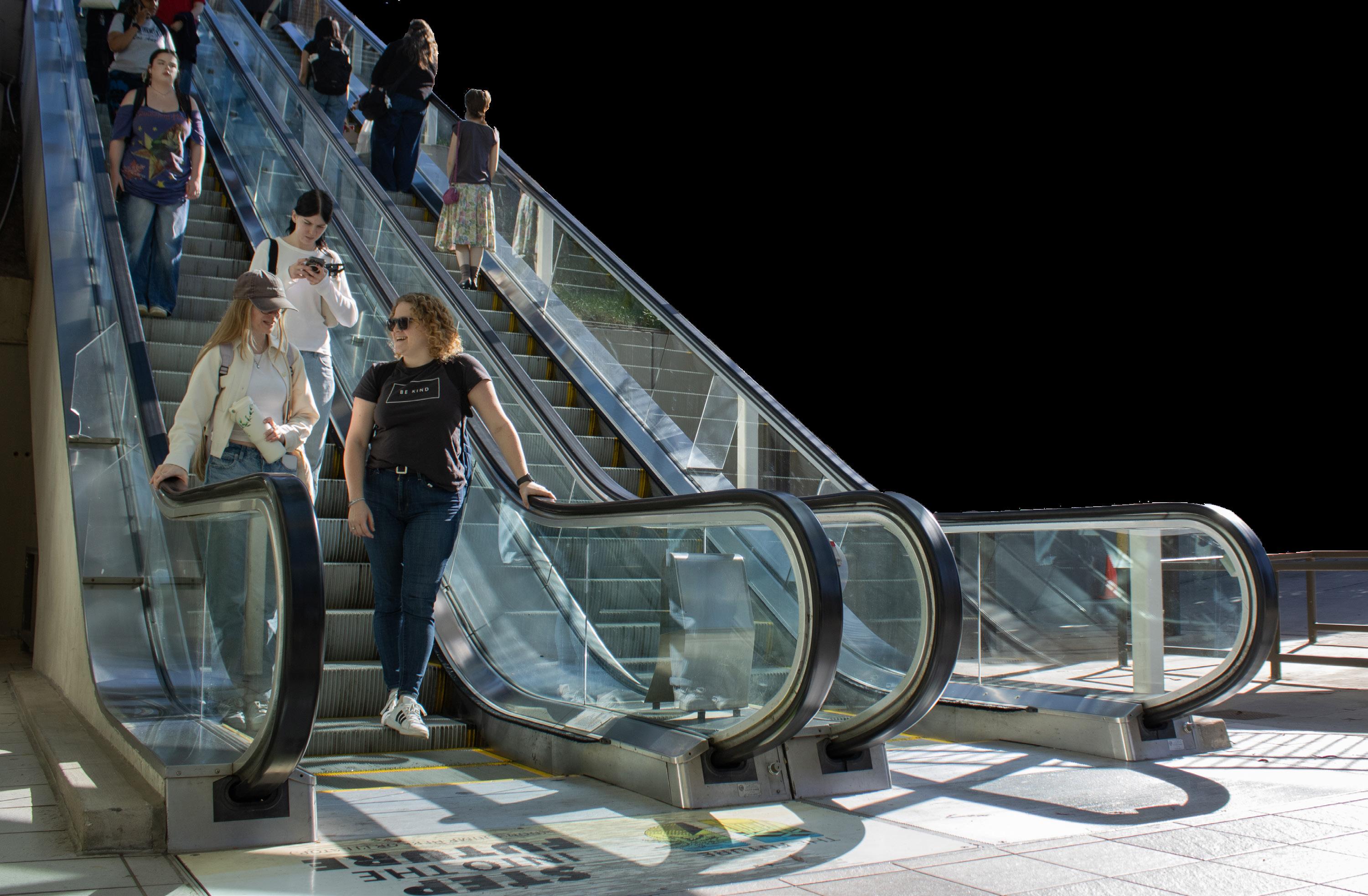
Students use the escalator on the west side of the USU to get from the lower to the upper campus and vice versa. Originally opened in 1998, the escalator has served students on their class commute for decades.
BY ANNETTE QUIJADA News Assistant
The total cost of the renovation and expansion to the University Student Union is currently $294 million, plus $21 million for relocations, temporary services and accessibility improvements, such as the Friendship Walk stairway.
This leaves Long Beach State’s Future U project with a total cost of $315 million.
Assistant Vice President and Chief Operating Officer of Student Auxiliary Enterprises Sylvana Cicero said they are making sure to be fiscally responsible with funds and continue to invest in long-term benefits.
Cicero said the floor plans for the project are almost done, but everything that is scheduled to be in the new USU is what they’ve been talking about with students over the years.
This includes:
• Basic Needs expanded.
• More and faster elevators.
• A student/parent family lounge.
• Eight concepts of food/restaurants.
• Re-envisioned Nugget.
• A double in size of the Beach Pantry.

The Friendship Walk rendering shows what the east side of the USU will look like once construction is complete in August 2025. The foliage will not be included, as it will take time to grow. This view is from the perspective of standing in front of Coffee Bean & Tea Leaf, looking toward CPACE and the Central Plant.

GRAPHIC CREDIT: EL NICKLIN/ Long Beach Current
The USU student fee will increase by a factor of about 2.3 starting in the fall.
A double in size of the kitchen.
Cicero said the USU will also be getting a full wellness center, featuring a lawn area, more massage chairs and mental health therapy rooms.
In their efforts to improve the wellness center, Cicero and her team visited California State University, Northridge’s Oasis Wellness Center and saw how much students at CSULB might benefit from a center similar to the one at
CSUN. Cicero said they also recently received a $3.5 million donation by doctors Sabira and Nasir Tejani to enhance the wellness center.
When it comes to the resources students need, Cicero said students have always had a voice, but the team remains open to any suggestions and ideas.
Starting fall 2025, the USU student fee will increase by $284 to support the construction and renovations. The USU fee increase is also set to help support student spaces, services and programs while construction is ongoing. The increase brings the semester total to $504.
ASI Vice President of Finance Andre Achacon said the USU fee had to go up in order to start collecting additional revenue to pay for the project. Achacon said ASI is using their reserves to pay for the initial payment of the project.
In order for ASI to be responsible with student fees, they place leftover funds into reserves. These reserves have been built over the years and are used in cases of catastrophes, capital expenditures, self insurance and future business requirements.
Achacon said the improved USU aims to address a lot of challenges students are facing such as:
• Food insecurity.
• Student success.
• Sense of community.
“When you look at the current student union and the rec center, students before us paid for these projects to happen, and we enjoy the facilities today,” Achacon said. “I love going to the rec center, and that’s because students made the sacrifice, the temporary sacrifice for future generations.”
Achacon said a lot of issues are going to be addressed in this new project that will bring a sense of community and belonging to campus. He said that he’s willing to make the sacrifice so that future generations can have the benefits of a new USU.
“If the students in the ‘70s had not raised the fees, we wouldn’t be in this building today. It’s paying it forward to future students,” Cicero said.
Cicero said she understands students’ frustration on having to pay an increased fee, adding, “We are open to graduates, alumni and families. They can come back to use our facilities.”
The first step of the Future U project is the renovation of the Friendship Walk stairways, which begins April 14 and will be finished and accessible during the upcoming fall semester. Construction of the USU should end by summer 2028 with the official reopening scheduled for August 2028, according to a CSULB news article.


From top: Rebecca Robles, president of Friends of Puvungna and member of the Acjachemen Nation, spoke with the Long Beach Current about the sacred site and its history with the school. Puvungna is a sacred site located behind the G2 parking lot at Long Beach State, traditionally belonging to the Gabrielino/Tongva/Kizh and Acjachemen/Juaneno Indigenous tribes.
Long Beach Current
BY ACSAH LEMMA Editor in Chief
Following an article the Long Beach Current wrote in September 2024, there have been no updates regarding Friends of Puvungna’s bid to be the official stewards of the sacred site located behind the G2 parking lot.
Puvungna, known as “the gathering place” is the site where “we changed from being spiritual beings to physical beings,” Friends of Puvungna President Rebecca Robles said. “It wasn’t just us. It was all of everything. It was the trees, the grass, the plants, the animals, the birds, the fish in the streams, everything. And so it’s a very, very important place.”
In fall of 2019, Long Beach State “dumped 6,400 cubic yards of construction dirt and debris on Puvungna,” resulting in a lawsuit against the university by the Juaneño Band of Mission Indians, Acjachemen Nation – Belardes and the California Cultural Resources Preservation Alliance, Inc., according to a settlement brief written by the plaintiffs’ law firm, Schute, Mihaly and Weinberger.
The 2021 settlement requires CSULB to establish a conservation easement that prevents any development, ensuring the site will be preserved for cultural and religious practices.
Throughout 2023, Cultural Resource Director for the Juaneno Band of Mission Indians, Acjachemen Nation – Belardes, Joyce Stanfield Perry and the tribes’ attorney, Sarah M. Lucey, met with university administration every two weeks to create a Request for Proposal that would serve as an application for official stewardship of the sacred site.
“It was probably nine months, close to a year, that we were working on the draft of that document,” Lucey said.
The sole organization that applied was Friends of Puvungna, a nonprofit formed in 2019 in response to the initial debris dump on the sacred site.
The bid, submitted in July, was denied according to Perry for the following reasons: conflict of interest, lack of experience and lack of endowment.
“They were rejecting all proposals because they said that the RFP itself was inadequate,” Lucey said, adding, “We spent almost a year drafting the RFP to say exactly what it needed to say to capture the qualifications for the land trust.”
How has university administration responded?
Since summer 2024, the biweekly meetings with university administration ceased, with no reason for the cancellation, according to Lucey and Perry.
Then, on March 14, in response to a January email from Perry, Tribal Relations Director Thalia Gomez, another participant in those meetings, said she was open to meeting again.
However, according to Perry, Gomez specified the meetings take place without the tribes’ legal representation present.
Gomez also suggested the meetings become monthly, instead of the previous biweekly meetings.
Currently, the tribes and Friends of Puvungna have been given no information on the updates to the RFP and why it was inadequate.
The Long Beach Current emailed another participant in those meetings, Associate Vice President of University Relations, Christopher Reese, who denied an interview request and wrote his responses via email.
“...We have been acting in good faith to also secure a conservation easement manager and related funding to ensure independent care of the site in perpetuity,” Reese wrote in the email.
According to Reese, the original RFP failed to “generate sufficient competitive response” so they elected to restructure it to better convey the project and the “university’s requirements to potential bidders.”
The Long Beach Current reached out to Gomez via email twice and received no response.
According to Robles, the university hasn’t taken care of the land, “but we know we can, because we’ve been doing it all this time…,” she said.
If Friends of Puvungna is granted stewardship, Robles said she hopes to create public walking paths, have a designated area for teaching, a private area for ceremonies, an area to sit and meditate and a “total restoration of Native American plants.”
Robles, who had an interview with the Current at the sacred site, recalled something her mother would always say as she surveyed Puvungna.
“We have these ties with the land. Our gods came to us at this place. We come here to nourish ourselves, but it’s still history,” she said. “It’s California history. It’s U.S. history. And that also needs to be acknowledged, shared and preserved.”

some answers
BY JAYLYN PRESLICKA Solutions Editor
Long Beach State provides a number of different mental health services, but it can be daunting to reach out for help. However, these services exist for a reason and are included in your tuition, so make sure to take advantage.
The most notable among students is the Counseling and Psychological Services department (CAPS), which oversees most counselors and mental health related programs.
Currently, to see a counselor the department’s standard wait time is around two-to-three weeks, but could be sooner if an appointment becomes available. These counselors provide short-term services, so they aren’t designed to be seen for more than six sessions. That said, some students have noted that they have received more.
After these sessions are complete, they will either refer you to outside care, or encourage you to join a CAPS-sponsored group on campus.
Within the CAPS-sponsored groups are services available for Black, Asian, Latino, queer, undocumented students and students who live in the dorms. These groups are classified as “drop-in” spaces, and are open to any and all students, typically meeting on a weekly basis.
If you or someone you know is going through a mental health crisis, CSULB offers a crisis hotline at 741-741. Text BEACH and the hotline will connect you to someone to speak with. This isn’t the best option for immediate mental health services, as someone is not likely to answer right away.
If you or someone you know is in an immediate crisis, call or text 911 or the non-emergency University Police Department line at (562) 985-4101 and the dispatcher will determine whether the Campus Assessment and Stabilization Team is needed.
BY JULIA GOLDMAN & DELFINO CAMACHO Arts & Life Editor & Arts & Life Assistant
Once seen as a threat to academic integrity, Long Beach State and the CSU system are now embracing AI tools like ChatGPT.
On March 28, the CSULB AI Steering Committee emailed the Long Beach State community to announce that students, faculty and staff would have free access to the ChatGPT Edu program starting April 2.
A variant of the company’s standard chatbot, the education-based AI is meant to help students ethically interact with non-human-based tutoring, reviewing and brainstorming.
The program is now available on the CSULB apps dashboard.
With nearly 30% of students already using these programs in their coursework and a new tech partnership to integrate artificial intelligence into education, CSULB now faces the challenge of fostering innovation while preserving academic honesty in an increasingly AI-driven world.
Where will classroom AI go as it grows?
On Feb. 4, the California State University system announced a “first-of-itskind” partnership with leading technology and Artificial Intelligence companies. This collaboration is to better educate and train students and employees on ethical AI use.
An email sent by CSU Chancellor Mildred Garcíanto and addressed to Cal State “community members” said the aim is to provide a dedicated, education-based AI platform at no cost to students and employees across all 23 campuses.
The announcement surprised stu-
dents, faculty and staff at CSULB, including Jennifer Fleming, a professor and chair of the Journalism and Public Relations Department.
Fleming is concerned the CSU “rolled something so large in such a wide scale” without consulting with faculty or staff.
Will Murray, Chair of Mathematics and Statistics at Long Beach State, said tools like PhotoMath and ChatGPT have solved lower-level math problems for a while.
“I think the challenge is sort of making students aware that it is not a substitute for human thinking, and it is not a substitute for sorting their own development of their quantitative reasoning skills and their logical reasoning skills,” Murray said.
What qualifies as wrongful use of generative AI in coursework?
Currently, it’s up to individual professors and departments at Long Beach State to establish regulations on proper and improper use of AI, per the Feb. 4 announcement.
First introduced in September 2023 and periodically updated, CSULB’s Student Guidelines on Generative AI require students to understand and follow their instructor’s stance on generative AI before submitting work.
If permitted, students must cite all AI usage through the Beach’s suggested citation formats; if the policy is misunderstood or if citations are incorrect, unauthorized usage can lead to a failing grade, discipline or even expulsion, per CSULB’s academic integrity policy.
If the Standards for Student Conduct regulations are breached, then any “academic dishonesty cases that occur in the classroom shall be handled by faculty members.”
Why are AI guidelines included in the academic dishonesty policy?
The Executive Committee of CSULB’s Academic Senate cited the 2019-20 ac-


Graphic credit: EL NICKLIN/Long Beach Current
Data from the Academic AI Subcommittee and the Executive Committee meeting on Feb. 1.
ademic year as having 190 cases of students reported for academic dishonesty.
The 2020-21 university year had 261 reports, and the fall 2021 semester alone had 174 reports.
Fifty of these fall 2021 reported cases came from two online sections of the computer science course, CESC 328—an accusation 13 students fought and the Current reported on.
Guidelines for the future
With no changes planned from the Office of Student Conduct and Ethical Development, OSCED Associate Dean
Trace Camacho, said he trusts individual instructors to regulate their courses and is excited about the potential opportunities the AI rollout and its tool could bring for students.
“So I think anything that promotes responsible, and that would be the word; [a] responsible, rigorous review in the way our students use AI in an ethical way is important,” he said.
BY MADISON YANG
Copy Assistant
Digital interactions, entertainment consumption, structures of the workforce and experiences in academia are rapidly evolving with the expanding implementation of artificial intelligence.
As AI continues to grow in the workforce, its increased presence in higher education poses ethical quandaries regarding the research, reporting and writing methods journalism majors will learn to wield.
For Felicity Kwok, a third-year communications studies major at Long Beach State, the pervasive presence of AI has sped up her ability to collect data and research topics or subjects.
When preparing questions for interviews she conducts, Kwok said using tools like ChatGPT allows for a much quicker process.
“I like it because it saves me time to do research on my own, and it allows me to get everything from one place,” Kwok said. “And if I find something that’s useful, I can just ask [ChatGPT] to dig deeper and ask them where they found this information.”
For Kwok, the convergence of AI and journalism has the ability to revolutionize the way in which news stories are pitched, created and presented. There is a noticeably faster process when using AI tools for any kind of work, whether it be for writing articles or completing a media project.
Xin Qin, an assistant professor in the department of computer engineering and computer science at CSULB, has done significant research at UC Berkeley’s Artificial Intelligence Research lab.
When asked about what kind of AI tools she foresees impacting the journalism world, Qin pointed to an apparatus called voice cloning.
Voice cloning tools like Noiz, Qin explained, can take someone’s spoken statement in a foreign language and translate it to English while still using the original speaker’s voice.
Qin said it can potentially aid aspiring broadcasters in just practicing their reporting.
“It’s in your voice, in your tone, in your accent, but it’s fluid English, with a
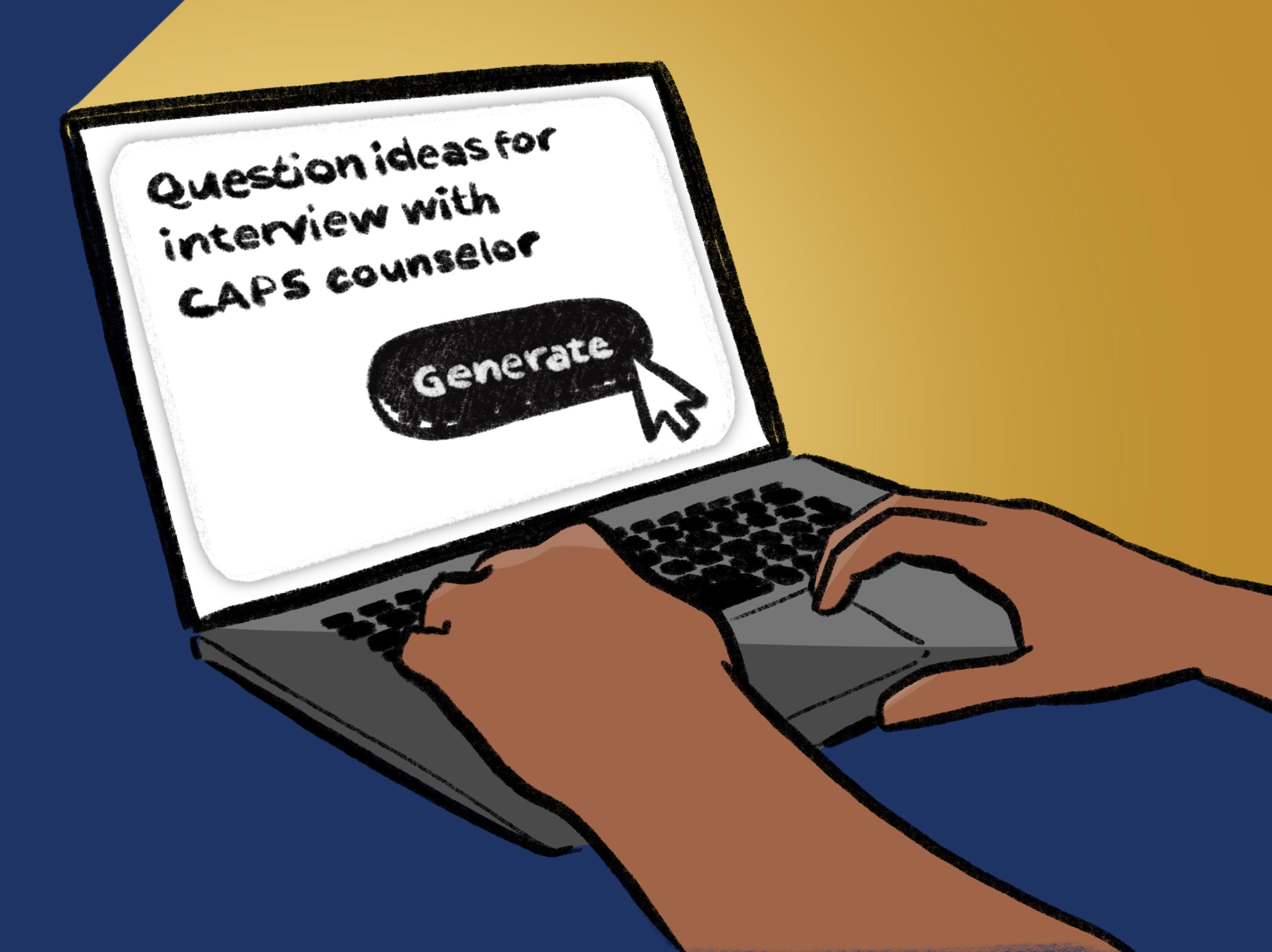
Illustration credit: EL NICKLIN/Long Beach Current
Preparing for interviews has taken a whole new shape and speed as journalism students turn to AI tools during this process.
proper stopping pace,” Qin said.
There are, however, the disconcerting implications of relying on AI tools to deliver news. For students studying journalism, Kwok pointed out, placing reliance on AI tends to minimize the human element of writing.
“It takes the personality out of it,” Kwok said. “ChatGPT is just looking at the data, and a person’s not just about their data. You actually have to look and do your own research… ChatGPT is a good diving off point, but you actually have to go and do your own work.”
As thorough research is a principle of the utmost importance to a journalist, omitting or shortcutting that step in the process of crafting a story could lead to an absence of personalized color in the piece.
Qin also discussed how her research
experience has shown that any new functions or codes with AI will always lead to small bugs, or errors. This highlights the importance of keeping experienced humans in their jobs so that such mistakes can be caught.
“From the way [I’ve seen] them training the AI, the more important the work, the more necessary it is that there is be a human to monitor it,” Qin said.
Beyond the classroom, AI is being incorporated by large publications like the Los Angeles Times.
Early into March, the LA Times introduced a new AI feature called Insights, which provides a breakdown and contrasting viewpoints at the bottom of each article.
The feature namely focuses on opinion stories, labeling the content as one of five positions on the political spectrum:
left, center left, center, center right or right.
The new feature stirred controversy when the AI-generated counterpoints were able to provide defenses for the Ku Klux Klan at the bottom of columnist Gustavo Arellano’s story on the KKK’s long history in California.
The Insights feature has since been removed from the story.
As the industry shifts with publications like the New York Times introducing their own use of artificial intelligence tools, the LA Times’ recent experience with Insights is a reminder of how journalism is continually shifting and acclimating to the new AI world.
“My anticipation is this tool will exist and may be integrated more and more, but someone will make this tool better,” Qin said.
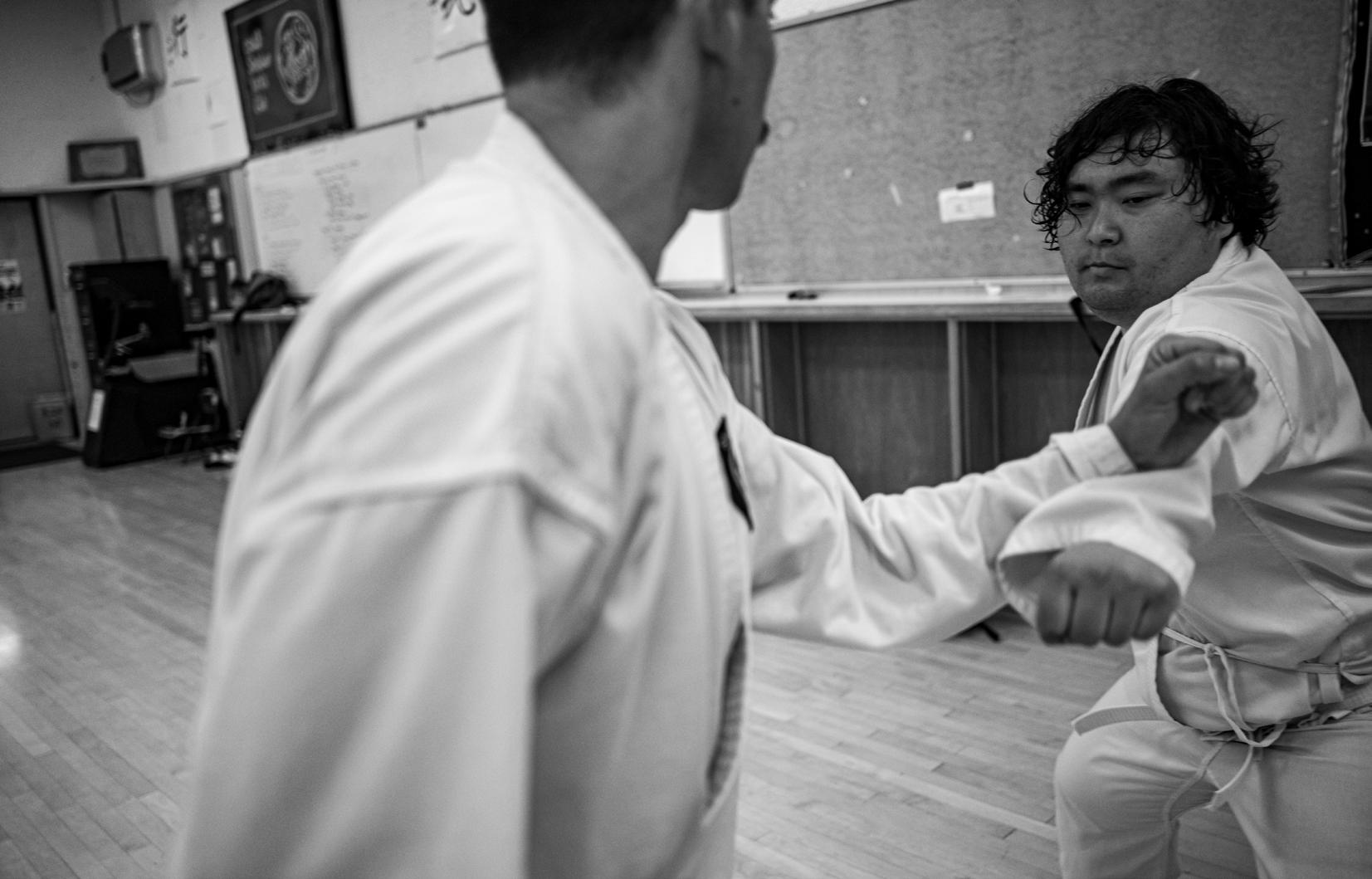
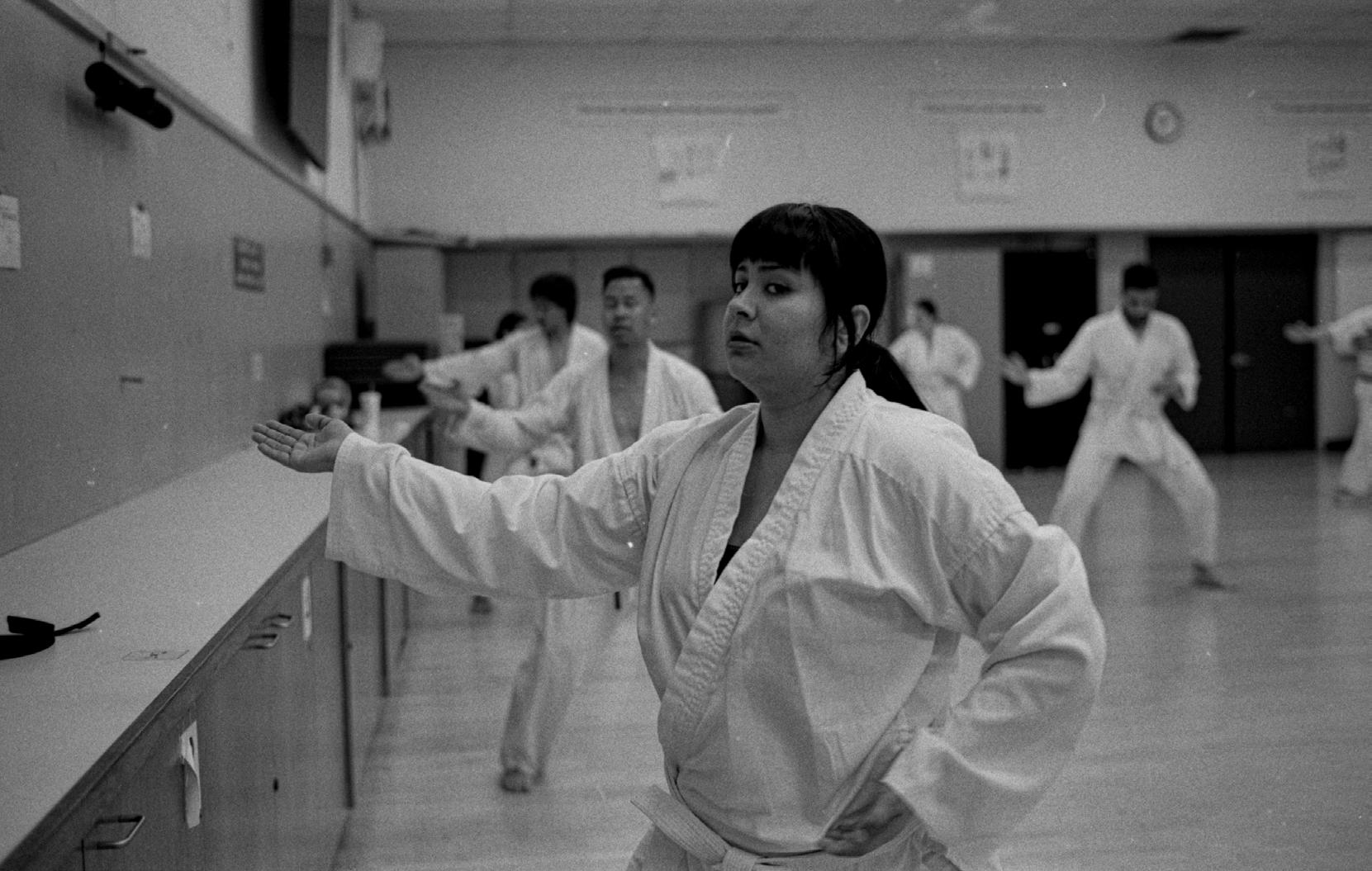
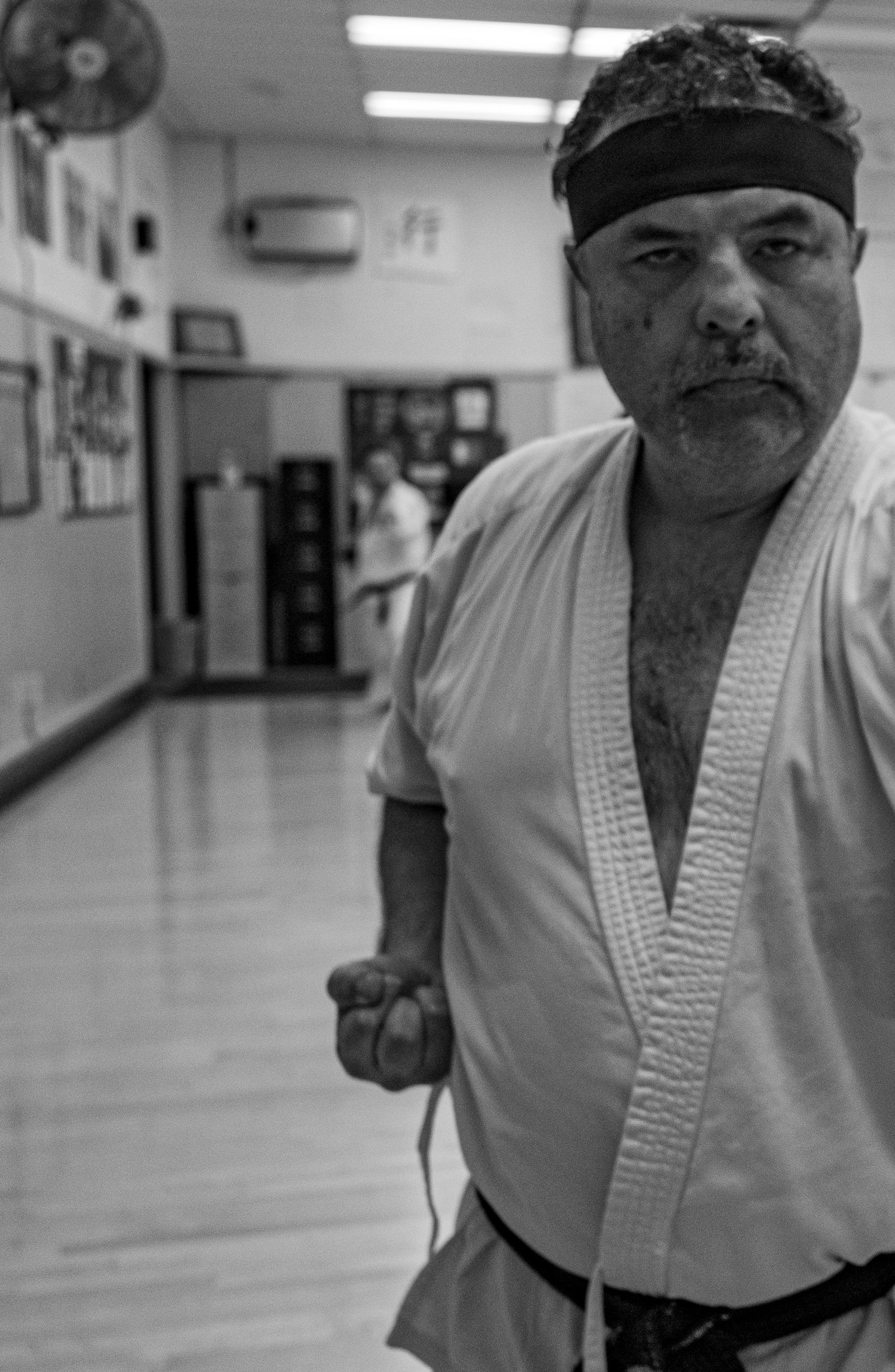
BY JUSTIN ENRIQUEZ
Photo Assistant
Tucked away in a corner inside the Gold Mine a sound of passion and devotion ripples through the hallways. At the center stands Trung Pham, an instructor and a fourth degree black belt who leads the charge of his Karate class with unwavering focus from beginning to end. Each punch and kick was met with a scream of devotion to the
craft of Karate.
The students follow his lead with their screams and commitment to the class. Students in the beginning warm up with stretches and jumping drills before learning the techniques used by Pham.
Each technique is called “Kata,” a Japanese word that means “form” and is commonly used in the context of martial arts such as Karate. These techniques help the students refine their form with timing and precision.
In one of their scheduled classes, the intensity reached new heights as the students had to perform 500 punches and
kicks on two separate days, a test of mental and physical endurance.
The club was founded by Donald DePree and Caylor Adkins, but the club can trace its origins all the way back to the founding of modern Karate.
Gichin Funakoshi was the founder of modern Karate. He passed his teachings to Tsutomu Oshima, who became the pioneer of Shotokan Karate of America.
In 1959 Caylor Adkins was one of six members to be taught by Tsutomu Oshima and in 1968 he formed the first Karate Club with Don DePree at Long Beach State.
In a past interview with the Daily Forty-Niner, now known as the Long Beach Current, DePree recalled the moment his journey began: “I was going down the hall…saw a sign that said on a bulletin board that said join the Karate club.”
The club welcomes all students, regardless of experience level, and holds regular sessions Monday through Wednesday and on Friday, led by instructor Jason Aurand.
A formal class is held on Thursdays in Room KIN 60, taught by Trung Pham.
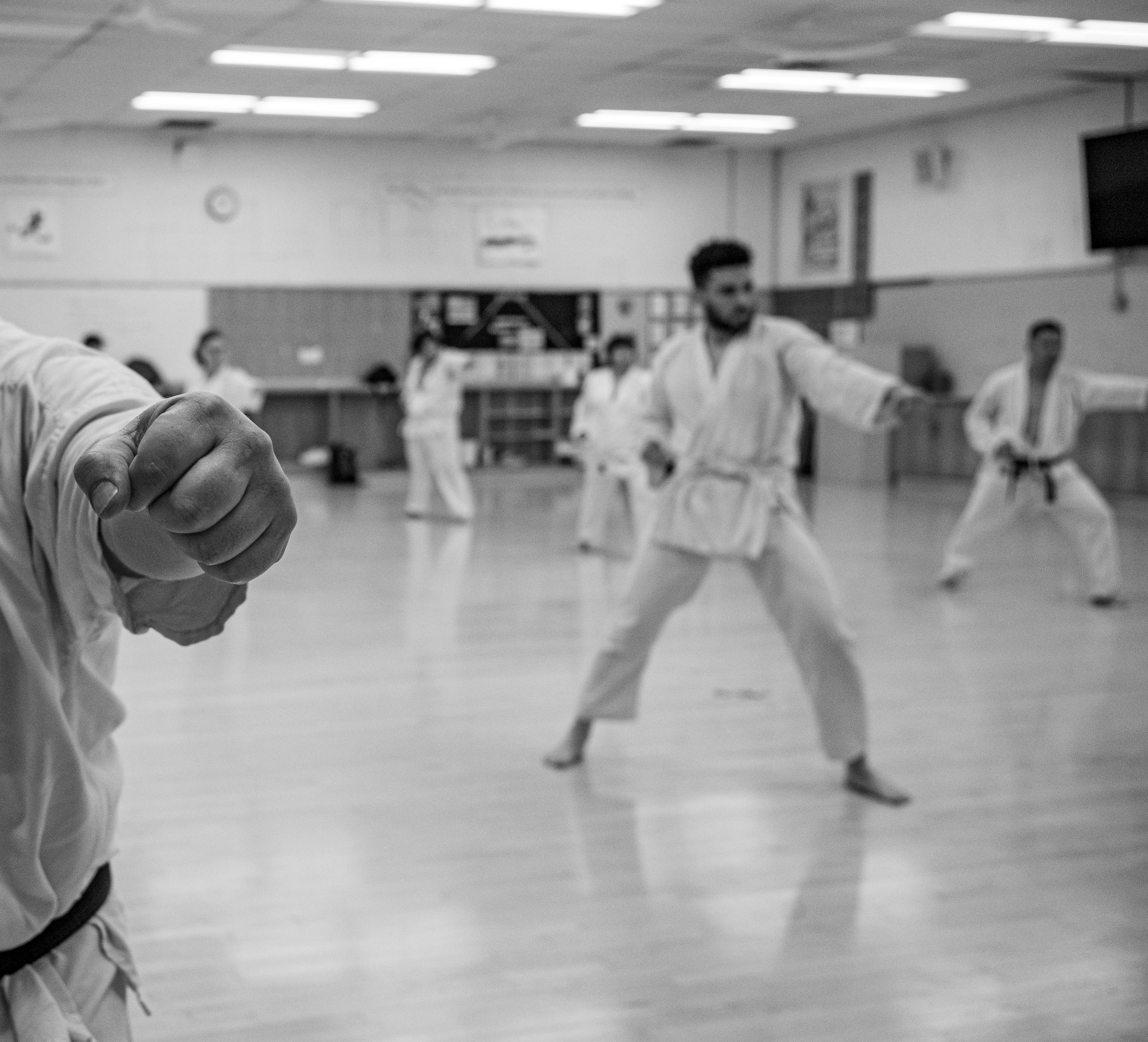
Clockwise from far left: Instructor Trung Pham teaches many different techniques called “Kata,” which refers to positions of movements in martial arts. Alumni of the Shotokan Karate Club come to class to help instructors and students. The club was founded by Donald DePree until 1992, when it was led by Samir Abboud. Students practiced with punches and blocks to demonstrate real-world situations. Instructor Trung Pham, a fourth degree black belt, teaches his students various movements and practices to improve their techniques. At the end of the class, the students knelt and bowed to show respect and acknowledge instructor Trung Pham. Students are told that form and precision are key for real-world situations. Students learn different forms and techniques with their arms and legs.


BY JULIA GOLDMAN Arts & Life Editor
WFrom left: This senior resident yellow spotted moray eel has lived at the Marine Lab for over 16 years, similarly to Yvette Ralph, the marine lab’s technician and manager. In August, Ralph celebrates her 16th year at Long Beach State. A squirrel watches carefully from the safety of their tree in CSULB’s upper campus. A hummingbird rests on a branch in the CSULB School of Art courtyard on April 1 between feeding from flowers. Kelp bass curiously approach the edges of their enclosure on April 2. The marine lab houses one other kelp bass in a separate tank inside. According to Marine Lab Technician Yvette Ralph, it had to be separated because it was getting picked on by the other fish.
by: JULIA GOLDMAN Long Beach Current
ithin Long Beach State’s 322 acre breath, what sorts of life call The Beach home?
The lawns of upper campus house tension daily with squirrels tangled in their territorial disputes.
Employees at Beach Building Services speak of a legend where coyotes ran throughout the bottom corridors of Brotman Hall throughout the COVID-19 pandemic.
For small mammals at CSULB, Biological Sciences Professor Ted Stankowich lists skunks, raccoons, possums, rats, domestic cats and house mice as common ones, noting the occasional sighting of California ground squirrels near the welcome sign as a native species.
Fox squirrels, which Stankowich describes as the ones that students see everywhere throughout campus, are a non-native species introduced in the mid-1900s.
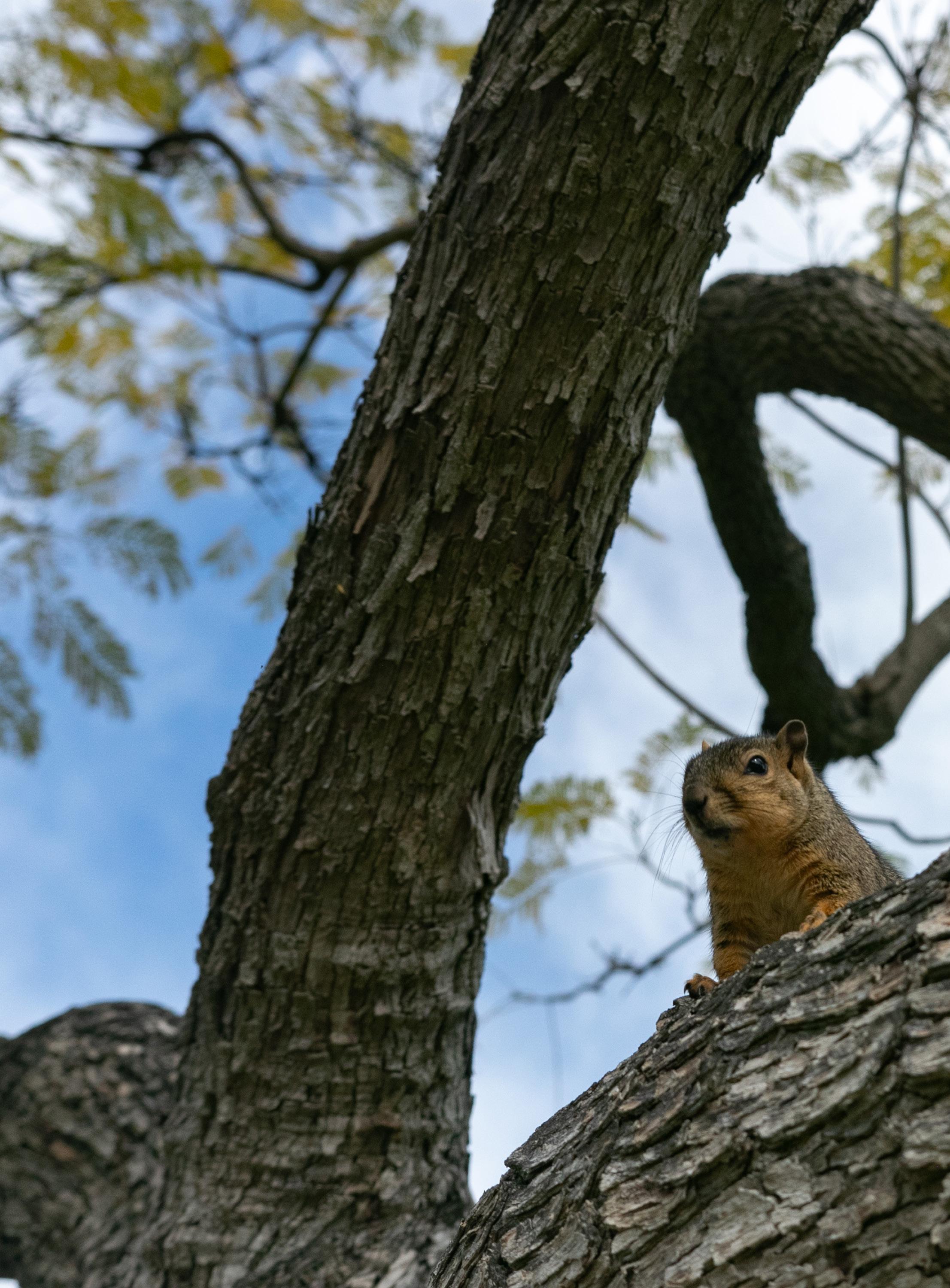
Though he predicts his request will fall on deaf ears, Stankowich encourages students to keep their distance and not feed any wildlife, especially the fox squirrels.
“As cute as they are, you shouldn’t be feeding them,” Stankowich said. “They are not supposed to be here. They will do just fine without you.”
As mentioned earlier, coyotes are a larger, mammal predator seen on campus. However, Stankowich said that the population has always lived here, and has likely not fluctuated at all.
“Coyotes in nature can be active any time of day, it’s not unusual.” he said. “They don’t attack adult humansthey will go after small mammals, small pets.”
If a student does encounter a coyote, Stankowich advises them to not be fearful nor run - instead, try to appear big and make a lot of noise.
According to Stankowich, over 40 years ago the campus used to house other native species, including weasels, badgers and deer.
However, as The Beach has grown, developed and be-
come more urban, the species that can not handle urban areas have been pushed out.
In contrast, the reason why generalist mammals like raccoons and squirrels have thrived is because of their ability to eat lots of different foods and their tolerance to live in different environments.
As Stankowich calls them, they are the “main players” of urban areas.
“They can scavenge among garbage cans and roadkill,” he said. “They are bolder, they have different personalities and are more willing to be around people to endure that, to get to that food.”
Right within the Hall of Science, room 118, an array of California native marine species exist in captivity throughout the CSULB Marine Lab.
Upon entry, guests are encouraged to interact with a blue touch table that houses marine animals including anemones, snails, worms, muscles, abalones and sea cucumbers.
Beyond the invertebrate species, the lab also holds
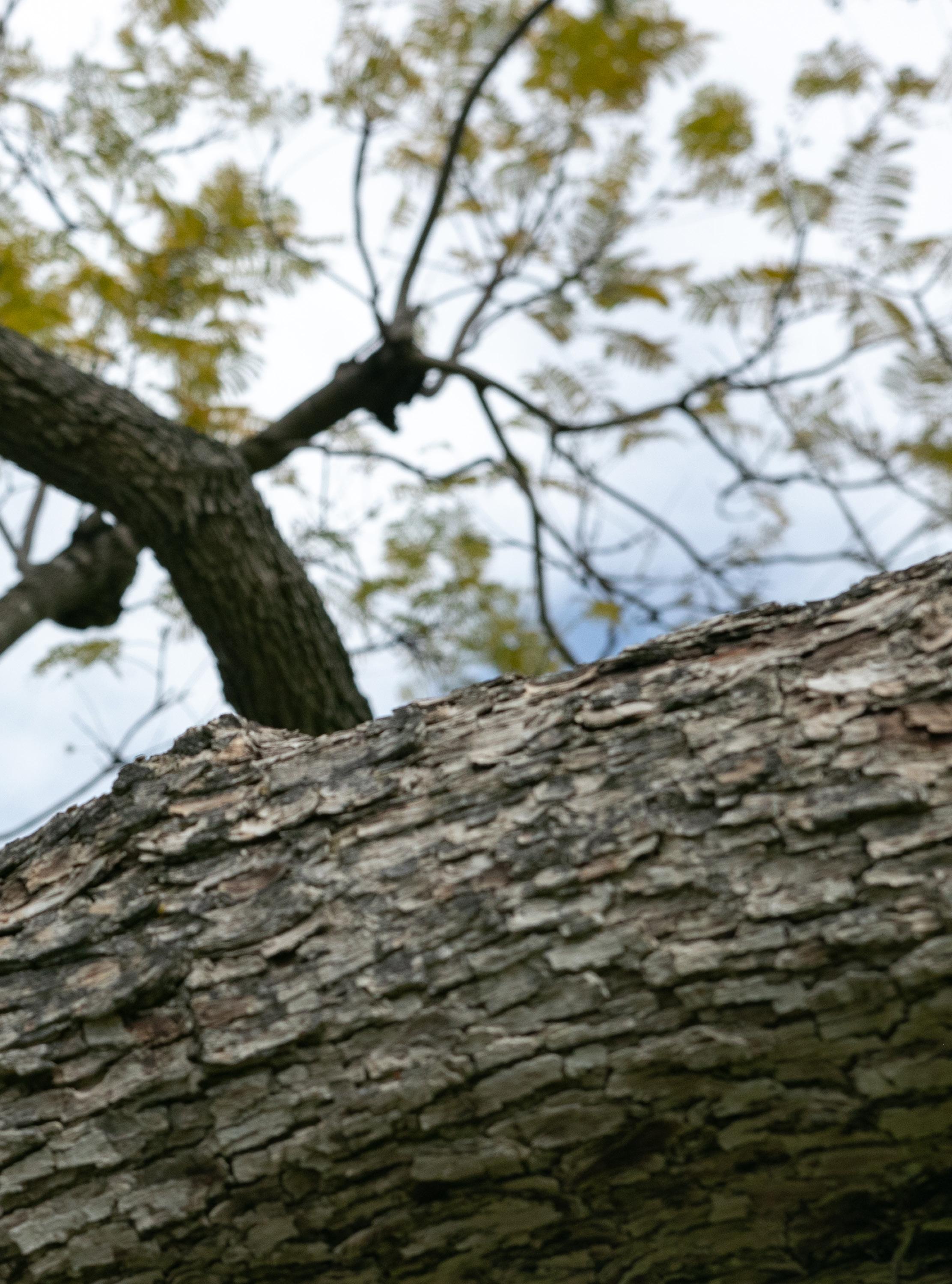
animals like one wolf eel, two California spiny lobsters, three juvenile sea bass, a yellow spotted moray eel, kelp bass, blacksmith fish and round stingrays.
As an educational tool, the Marine Lab often hosts tours to interested students and children touring with their schools, according to Marine Lab Technician and Manager, Yvette Ralph.
Each species, which are cared for and studied by Ralph, her five undergraduate assistants and two graduate assistants, are either donated by local aquariums like the Cabrillo Marine Aquarium or are directly collected by Ralph herself.
With her special collecting permit from the California Department of Fish and Wildlife, Ralph will go on boat trips, scuba diving excursions and visit tide pools across the coast of California to collect a variety of marine wildlife.
These collection efforts are a key part of The Beach’s invertebrate zoology curriculum. As students progress through the semester, the faculty will ask her to collect

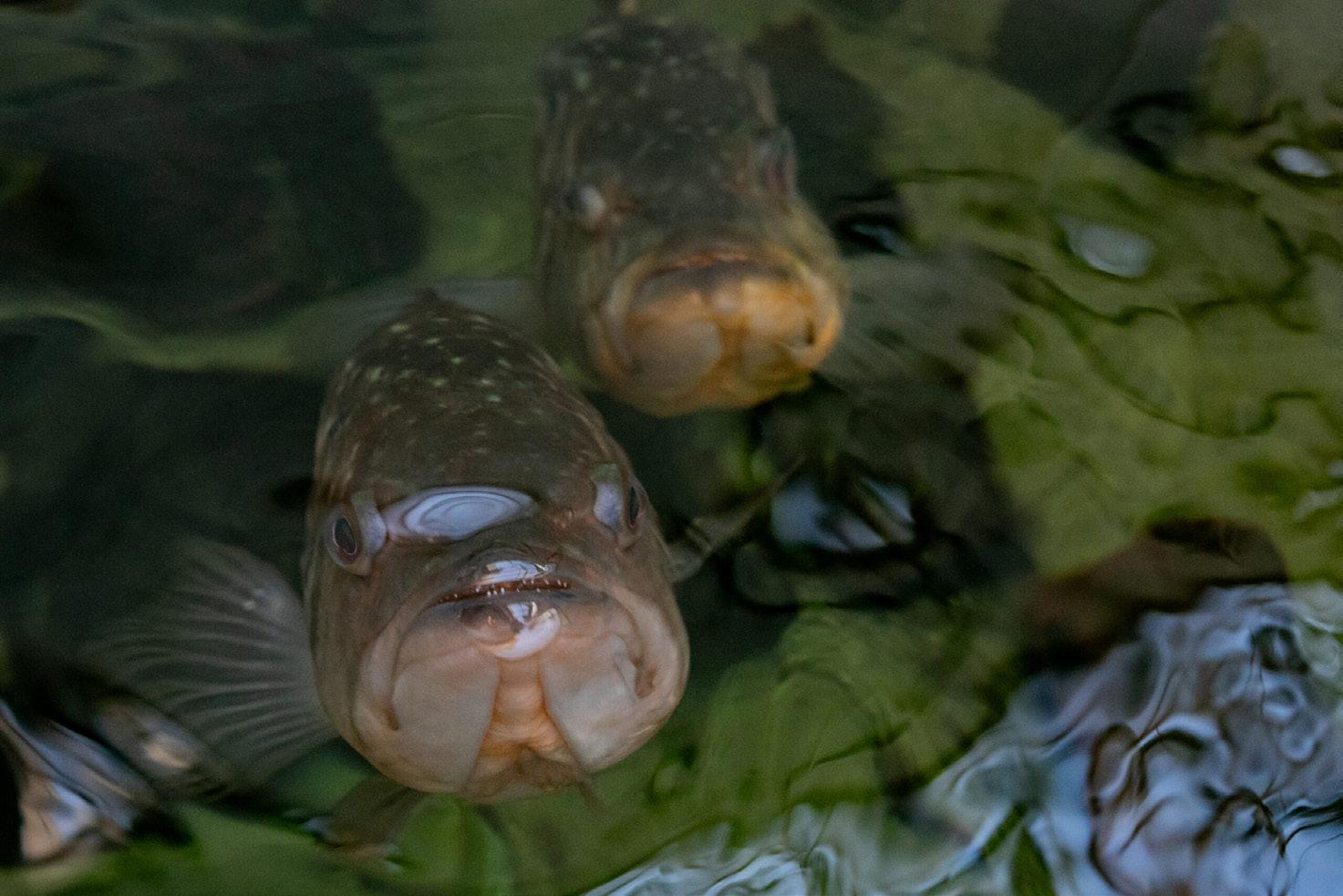
additional invertebrate marine species for students to study.
Connected to and right beside the Marine lab, other aquatic predators find shelter through the Shark Lab, operated by Director and Professor of Marine Biology, Chris Lowe.
Like the Marine Lab, students, guests and children participate in educational tours to see resident horn, leopard and gray smooth hound sharks at the Shark Lab, with Lowe citing over 7,000 tours completed in the last year.
Most ectotherm research, performed by Lowe, his staff, his one graduate student and 12 graduate students, is done off-site locally.
One way the lab furthers ectotherm biology research is through taking the data collected during the field research, and later replicating a hypothesis in the lab’s controlled environment.
Lowe cites a project, where his students used a respirometer swim tunnel in the lab to measure how water
temperature affected the metabolic rates of sharks.
They found a relationship between body size and metabolism; as an animal gets bigger, their metabolic rate gets lower.
Further expanding on that project, Lowe said, the next generation of students created mathematical models to predict how the horn shark’s rate of metabolism will increase with changing ocean temperatures.
The most-dramatic model, with projections of the climate warming over the next 50 years, indicated a 40% rise in horn shark metabolic rate.
“That means horn sharks will probably not be able to survive those temperatures - they would have to eat 40% more to just break even,” Lowe said. “That’s one of the cool projects that us keeping animals in the labs let us measure.”
If you are interested in scheduling a visit the Shark Lab and Marine Lab, please visit the Shark Lab’s contact page and send a request to Ralph at her email: Yvette.Ralph@csulb.edu.

BY JAZMYN DE JESUS Social Media Editor
Last spring, pop artist PinkPantheress sparked minor controversy over stating her opinion that she does not believe songs need to be longer than two minutes and thirty seconds. She elaborated on this, stating that bridges, outros and repeated verses are simply not needed.
This sparked heated debate online, with masses of people calling her opinion lazy and a result of the “TikTokification” of music.
In reality, it seems that the shortening of songs can be attributed to multiple factors, and not including a bridge in a song is not only indicative of the public’s growing preference for shorter tracks, but an intentional creative choice.
In a study done in 2021, it was found that the duration of songs over the last 20 years has been on a steady decline, going from around four and a half minutes to three minutes and 15 seconds.
The music industry is currently experiencing its most rapid and visceral
change in the digital age, with the combination of digital streaming platforms, social media and artificial intelligence having a major impact on how music is made and consumed.
Unfortunately, this has resulted in an overall lower expectation on the quality of the music we are listening to and the production process itself.
The “TikTokification” of music is a real phenomena that we can definitely hear.
However, what PinkPantheress and similar artists like Laila! and lil hero are doing in omitting bridges in many of their songs, represents the many young artists who were raised in the Internet era experimenting with production and songwriting.
Thanks to software like GarageBand, even children with Internet access and a hint of tech savviness are able to create a new age of bedroom pop and dance pop that sounds like it was truly birthed from the digital age.
Short, sweet and heavily produced pop is not “lazy” or uncreative, but instead an indicator of the landscape under which many Gen Z and Gen Alpha aged artists were brought up under.

Iam writing in response to the article titled “CSULB CAPS struggles to hire counselors amid student concerns” published in the Long Beach Current.
While I appreciate the focus on mental health at CSULB, I feel compelled to respond, as it contains several misrepresentations that require correction and clarification.
As the only full time Black psychologist at CAPS since 2019, I have been serving our students—particularly in response to the heightened need that followed the 2020 racial reckoning—without the benefit of a robust culturally responsive mental health infrastructure. I joined the California Faculty Association (CFA) not for personal gain, but to fight for improved mental health access and support for all students, particularly those from historically marginalized communities, because our campus leadership was not addressing this crisis with urgency or transparency.
To suggest that two of our counselors are not seeing students is not only a gross misrepresentation but
CFA REPRESENTATIVES,
We received your email and would like to address the statements made in your letter today. In order to do so, we feel it is necessary to provide context on the tumultuous communication process we have faced with university administration.
The majority of our CAPS-related stories this academic school year were written by Jaylyn Preslicka, our solutions editor. In that position, Jaylyn’s main reporting duties have been to cover mental health on campus, with a great emphasis on CAPS. In Jaylyn’s reporting, they have been in consistent communication with Associate Vice President of Health & Wellness Damian Zavala and the Executive Director of Strategic Initiatives at Student Affairs Melissa Norrbom Kawamoto.
The reason for this is that in Jaylyn’s reporting process, the administration has consistently redirected interview efforts away from CAPS counselors and toward the administration. Our Community Engagement Editor, Sam Farfan, has also witnessed the denial of interview requests and redirection to Damian Zavala, Melissa Norrbom Kawamoto and CAPS Administrative Director Amanda De Loera-Morales, who have stated they are the only media liaisons for any CAPS-related stories.
In a specific instance, Jaylyn emailed CAPS Psychologist Ferdinand Arcinue, in early February regarding a
a harmful deflection. The reality is that all CAPS counselors, including those engaged in CFA leadership or temporarily on sabbatical, fulfill the duties outlined in our 40-hour workweek. That includes direct service to students, professional development, and service to the university community. The idea that this equates to “not seeing students” is not only false but also an insult to those of us who consistently go above and beyond despite overwhelming demand and chronic under-resourcing.
Let’s be clear: This narrative serves as a convenient distraction from the real issue—the administration’s slow, reactive, and opaque hiring process, which continues to fall short of meeting the urgent mental health needs of our students. At present there are 14 full-time Counselor Faculty. Based on the national standard of counselor-to-student ratio, our campus should have 24 full time Counselor Faculty. Instead of acknowledging the collective efforts of clinicians who have been holding the line under immense strain, the universi-
ty has chosen to highlight incomplete hiring statistics while ignoring the reality of students facing 4–8 week wait times and mental health providers managing unsustainable caseloads. Worse still, by suggesting that union-affiliated faculty are not doing their jobs, this framing functions as a thinly veiled attempt to undermine our credibility and shift blame. It reads as both retaliatory and an act of union-busting, aimed at those of us advocating for a more equitable and responsive mental health system for both students and counselors.
LB Current readers, as students would you prefer for the University spend your tuition dollars on University Police or on additional Counselor Faculty?
If the goal is truly to “hire the best,” then the university must also be the best at supporting its existing clinicians, valuing their work, and being transparent with the campus community. Anything less is an abdication of leadership at a time when students deserve so much more.
In Solidarity, Shelly-Ann Collins Rawle & Claire Garrido-Ortega Co-Presidents CFA@LB
profile article. In response, Dr. Arcinue emailed back, “The administration has forbidden its workers from talking to the press. All press inquiries must first go through the university’s PR Department for approval.”
We questioned the validity of the statement, so Jaylyn followed up with both Director of the Office of Belonging and Inclusion Darnell Lewis and CFA Representative Beka Langen.
“There are no campus guidelines preventing faculty or staff from engaging with the media,” wrote Darnell Lewis in an email response.
Beka Langen wrote, “There are no blanket rules prohibiting faculty from speaking to the Current. I’m shocked to hear that people have been told this or are saying this.”
Despite being told this, we were still stonewalled in our interview efforts with CAPS counselors. However, in this specific story, the emphasis was on the hiring process of CAPS counselors. A topic we felt administrators who are more directly involved with hiring could answer better.
In addition, according to your email, “all CAPS counselors, including those engaged in CFA leadership or temporarily on sabbatical, fulfill the duties outlined in our 40-hour workweek.”
The information in our article regarding the workload of the CAPS counselors, especially those who
might not be able to see students full-time, was directly given to us by Executive Director of Strategic Initiatives at Student Affairs Melissa Norrbom Kawamoto.
Therefore, any “gross misrepresentations” in our article are a direct result of internal miscommunication from the university administration.
We are equally as frustrated in the university’s lack of communication efforts and transparency regarding the CAPS program, counselors’ workloads and overall work culture. However, we do not think it is conducive to a productive dialogue to not give us enough time to respond to your email before posting on social media accusing us of “union busting.”
Moving forward, we will make sure to attribute all facts received from sources directly to them to avoid any confusion.
We are an independent, student-run publication with a proven track record of unbiased reporting and fair journalism. We sympathize with the valid issues you discussed in your letter, but we were only writing with information given to us by your direct supervisors, who deemed themselves to be the only media liaisons for CAPS.
If there are any concerns we have not addressed, please let us know.
Best regards, Acsah Lemma & Sam Farfan Editor-in-Chief / Community
Engagement Editor
BY DAVIS RAMAGE Sports Editor
After 37 years with the program, former Long Beach State head coach and now director of track and field Andy Sythe has decided that his race is run and is retiring from the sport.
In a profession as demanding as coaching athletics, coaches often sacrifice time with their families to ensure that their program and athletes are performing at the highest level.
Sythe’s story is no different.
He looks forward to stepping up for his wife, who he says has covered for him at home for years, and spending more time with his high school and college-aged daughters.
37 years is a long time to be doing one thing, and Sythe could not choose just one moment that stuck out from the rest during his career, so he chose three:
• The men’s team winning their fourth Big West championship in a row in 2016 in Long Beach
• The women’s team winning their first Big West championship in 2018
• The men’s team starting the run of four championships in a row with their win at the Big West championship at UC Davis in 2013
It all started for Sythe in 1988 when he was hired as an assistant, under thenhead coach Ralph Lindeman. It only took him one year to become head coach when in 1989, at 23 years old, he became the youngest NCAA Division I coach in the United States.
According to Sythe, educating was always in his blood, as his mother and grandmother were both teachers and his father was a physical education teacher for a stint as well.
“Educating people and the rewards that come with that, the successes, the achievements, those are what got me into [coaching],” Sythe said.
When Sythe took over the program, LBSU track and field experienced a major shift, which is supported by the record books.
One statistic stands out the most
among the accolades: LBSU currently has 34 indoor track and field records, 33 of which were set by athletes coached by Sythe.
Not only has Sythe impacted the program’s records, but he has also made an everlasting imprint on LBSU’s track and field facility.
In 2006, LBSU’s track and field facility was deemed unusable due to safety concerns, as the condition of the track was not up to par for competition.
10 years later, the Jack Rose Track, one of the premier track and field facilities in the nation, was born as a result of Sythe’s vision for a top-tier facility and the Beach Pride Referendum, which was started by then-track athlete Wayne Stickney-Smith.
Taking over as head coach is Sythe’s college teammate at San Diego State University, LaTanya Sheffield.
Sheffield, who is now in her 13th season as a coach for LBSU and her third as the head men’s and women’s track coach, was the head women’s coach for Team USA at the 2024 Paris Olympics where her team took home seven gold, five silver and five bronze medals.
She was retired until Sythe sought her out in 2011. Sheffield, living in Arizona at the time, decided to come to The Beach after her youngest daughter graduated high school.
“She has that personality, she has that charisma, she has that leadership ability, that motivational ability and also has experience and know-how in the profession to understand what it takes to perform at a high level,” Sythe said.
Aside from all the accolades and impact on the program as a whole, what Sythe holds most dearly is the academic success in his tenure.
Under Sythe’s supervision, 603 athletes have been named to Academic All-Conference teams.
“Whether it’s a legacy, you can decide that for yourself, but if it’s the thing that I really look to as the thing I am the most proud of, those are the things,” he said.
In the final months of his career, Sythe only has one wish; to see as many faces as he can from all the players that have been through this program, and specifically, for them to cheer the team on at their conference championship at the Jack Rose Track on May 9-17.
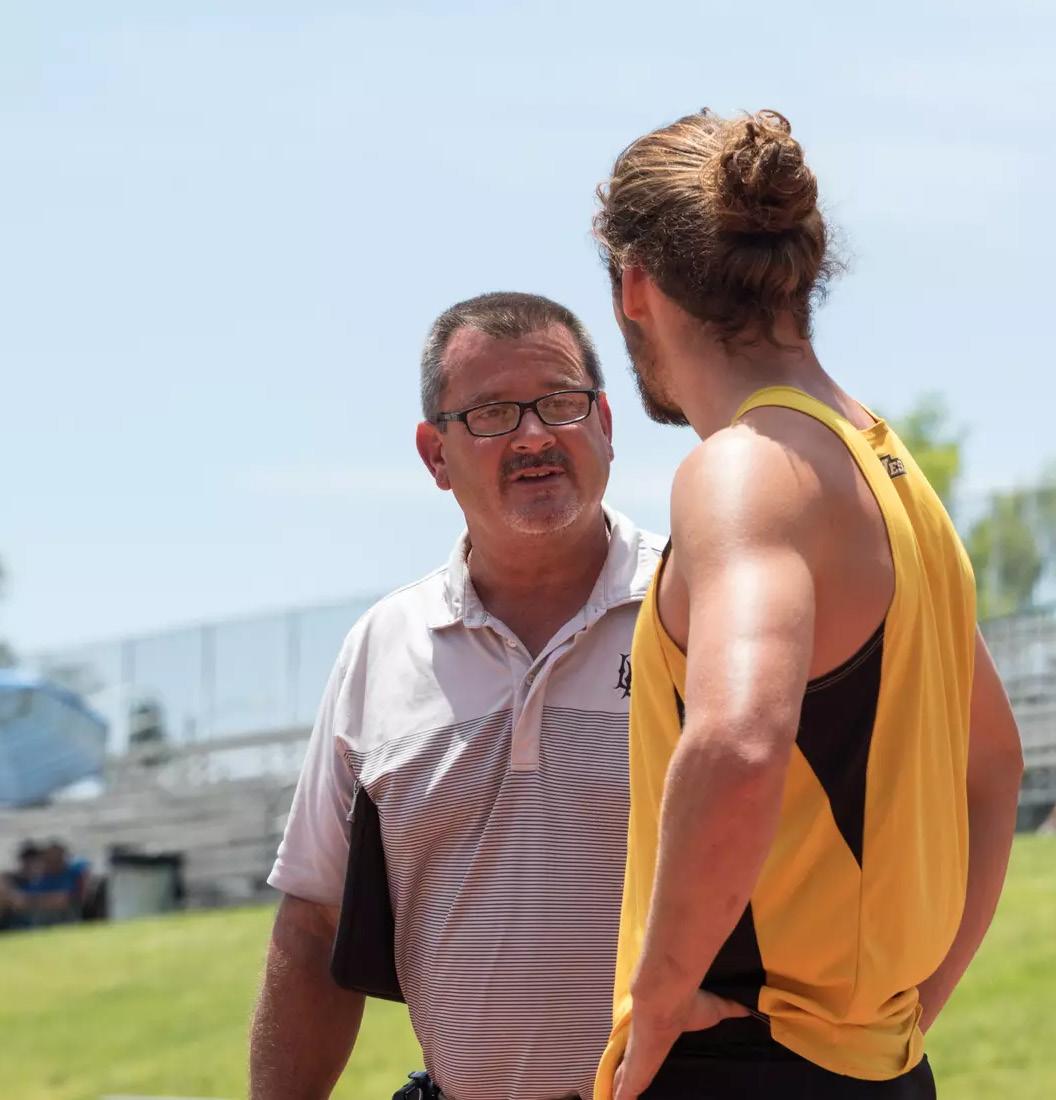
After 37 years with the program and countless records recorded under his leadership, LBSU director of track & field Andy Sythe is retiring to spend more time with his family and to step up for his wife who has filled in for him for so long.
”
Educating people and the rewards that come with that, the successes, the achievements, those are what got me into [coaching].”
Andy Sythe Long Beach State Track & Field Head Coach

BY JACK HASLETT Sports Assistant
The end of an era is approaching for LBSU women’s tennis as head coach Jenny Hilt-Costello, 52, will retire at the end of the 2024-25 tennis season, wrapping up her 29-year career at The Beach.
Hilt-Costello has been a cornerstone for a successful LBSU tennis program since joining The Beach in 1995 as an assistant coach before taking over the head coaching position two seasons later.
Under Hilt-Costello, LBSU tennis has become one of the most successful programs in the Big West, winning the conference tournament a record 13 times, including six straight titles from 20042009.
“During my time here, there were times when I was approached by schools at some of the major conferences, but I love Long Beach…I really love this university,” Hilt-Costello said. “I just feel very fortunate that this was my first stop, and my only stop, in my coaching career.”
Hilt-Costello’s personal accolades also stand out. She has been named Big West Coach of the Year a record nine times and has accumulated over 400 wins as a coach.
“Every single tournament title that we had was special,” Hilt-Costello said. “I think 2004 might be a little bit more special because that year I got sick, I had cancer, I had surgery... but I wasn’t able to do everything I would normally be able to do, and [the players] really stepped up.”
She said that she and her husband have several trips planned when she retires, beginning with a trip to Jamaica about three days after her last day.
As a Dodgers fan, she has mixed some trips to Baltimore and New York for Dodgers games into the travel log as well as the U.S. Open, which will be the last major tennis open she has left to see in person.
Hilt-Costello’s 29 years have transformed the program into an award-winning destination, even though it lacks funding compared to other top programs.
The work ethic she has instilled in her teams over the years makes up for the gap in resources they had compared
to other programs they were competing against.
“My mentality my whole coaching career has been to grind,” Hilt-Costello said. “We’re going to work harder, longer, smarter than the other teams… so those that come in and are ready to put in the work… and are hungry to get better and see success have tended to fit in.”
Assistant coach Gertjan De Wilder is in his third season coaching alongside Hilt-Costello and said he has learned much from his head coach, such as a grinder mentality and a willingness to lead by example.
“Honestly, I think we put [in as much] hard work as the players do, and we’re not even playing… Jenny is doing the same amount as me... whatever she’s doing on the court still is impressive,” De Wilder said.
Six out of seven players on this season’s women’s tennis team are freshmen, meaning their first season under the leadership of Hilt-Costello is also their last.
Junior Paulina Franco Martinessi is the only player to have played multiple seasons with her coach after transferring to LBSU in her sophomore year from Xavier University.
Martinessi credited her coach for her leadership and mentorship, something that she needed following her transfer.
“In my freshman year, I kind of lost the love for tennis a little, and when I transferred here [to] Long Beach State and Jenny started being my coach, she made me gain that love back,” Martinessi said. “She pushed me more on the court… I started loving to play again.”
Hilt-Costello does not know what challenges lie ahead of her in post-retirement life, but she remains confident she will not return to college tennis coaching anytime soon.
One possibility she discussed was consulting and private coaching closer to the high school level, helping young tennis players unlock the potential needed to make the next step.
Whatever challenge awaits Hilt-Costello in the future, one thing is for certain: She will leave a lasting mark as she has at LBSU.
“She’s just the G.O.A.T.,” Martinessi said. “She put a big mark here; it’s going to be hard to beat that. She is going to have this legacy of teamwork and hard work.”
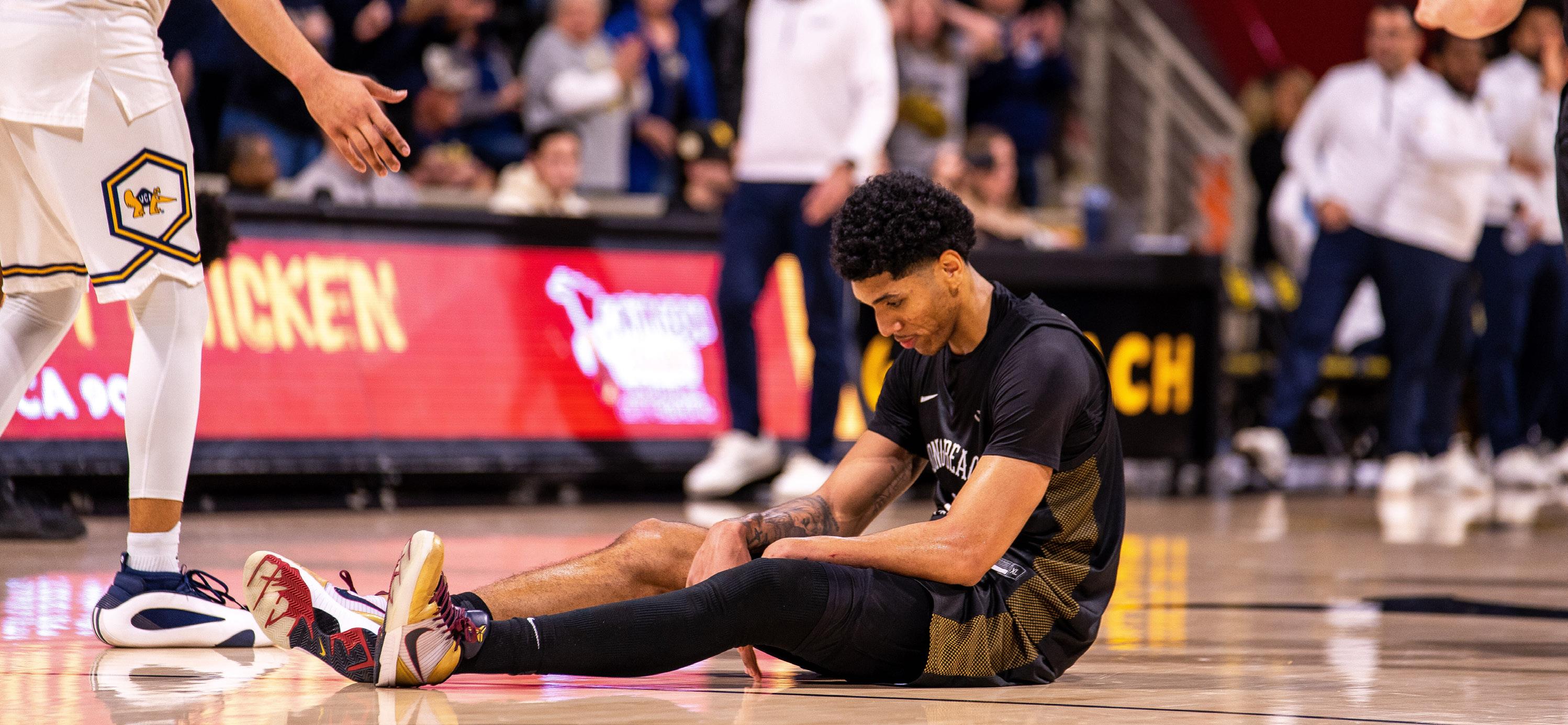
BY MATTHEW COLEMAN
Sports Assistant
After winning the Big West Tournament in 2024, Long Beach State men’s basketball endured a program-record 15game losing streak in 2025, marking its worst season in 17 years under first-year head coach Chris Acker.
With a conference record of 3-17 and a 7-25 overall record, this was the team’s fewest wins in a season since 2007-08, former head coach Dan Monson’s first year at the helm of LBSU.
From a talent perspective, The Beach did not have the personnel to compete with the Big West’s class and were often outmatched.
However, they repeatedly found themselves in close games but came up short and failed to make the necessary adjustments to come out with wins.
Whether it’s the lack of continuity or the lack of late-game adjustments that translated into a 1-8 record in one-possession games and 0-4 in overtime
games, The Beach struggled immensely from start to finish with an early-season eight-game losing streak before their record-breaking 15-game skid.
As it was heavily documented, this team had little to no resemblance to The Beach from the year prior, which made the trip to the NCAA Tournament.
Just three of the 15 members from that roster returned to play this past season, along with an entirely new coaching staff.
The three returning players combined to average 4.3 points per game in 2023-24.
However, select players from the roster fostered significant potential and proved they could contribute to The Beach beyond the rebuilding transitional season.
Once a top prospect coming out of high school, senior guard Devin Askew led the charge offensively, averaging 18.9 points per game.
Askew was briefly a part of The Beach’s outlook for the 2025-26 season after it was announced he would be returning.
“[Askew] is coming back to our program next year, so that’s exciting for our program,” Acker said postgame on March 6.
It’s since been reported that Askew, along with freshman guard Kam Martin and junior guard TJ Wainwright, will be testing the waters of the transfer portal, something The Beach has fallen victim to more often than they have been beneficiaries of.
This sparks the latest question mark standing in LBSU’s way of returning even to the conference tournament in 2026: Will a whole new roster be issued, and can this coaching staff adapt to a new cast once again to avoid another disastrous season?
In recent years, the transfer portal has been detrimental to maintaining mid-major rosters in college basketball, with little protection from players being poached from smaller schools to larger institutions with greater NIL packages.
The departing backcourt carried the load offensively throughout the season, leaving The Beach with a glaring hole and points to make up for.
There is still optimism for players, including sophomore forward Derrick Michael Xzavierro, who had a stellar season in his first full year.
“It seemed like certain players like Xzavierro were doing everything they could to keep things positive despite the rough circumstances,” 22 West play-byplay announcer Bruce Kuntz said.
Xzavierro averaged career highs in points (5.2) and rebounds (6.8) in the sometimes inconsistent minutes he received.
His presence on the interior of the glass and versatility as a defender often gave LBSU a spark both as a starter and reserve.
With the uncertainty surrounding the roster going into next year, look for Xzavierro’s usage to go up with a full year under his belt.
“The rotations were certainly different as the season went on, as it seemed like they prioritized scoring,” Kuntz said. “You would hope the first year of Acker’s tenure and all the adjustments will help provide some clarity for what they target in recruiting for next season.”






